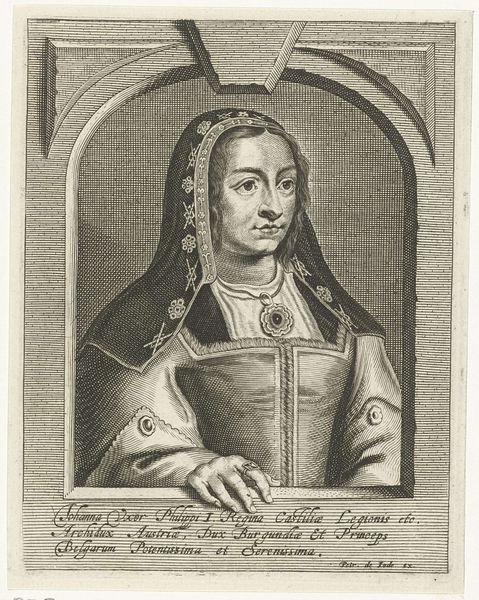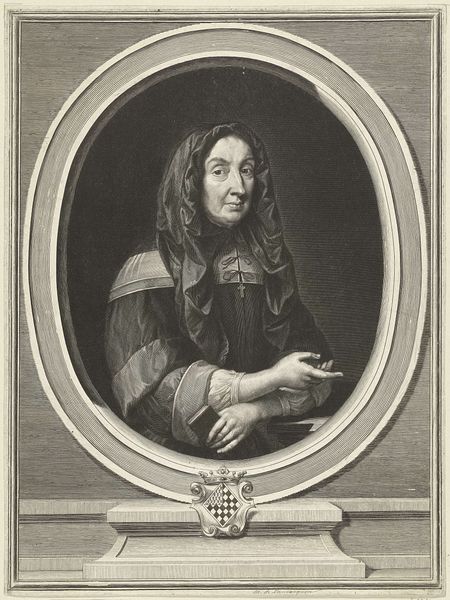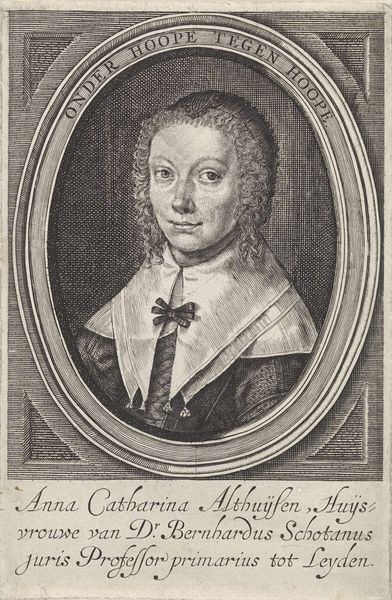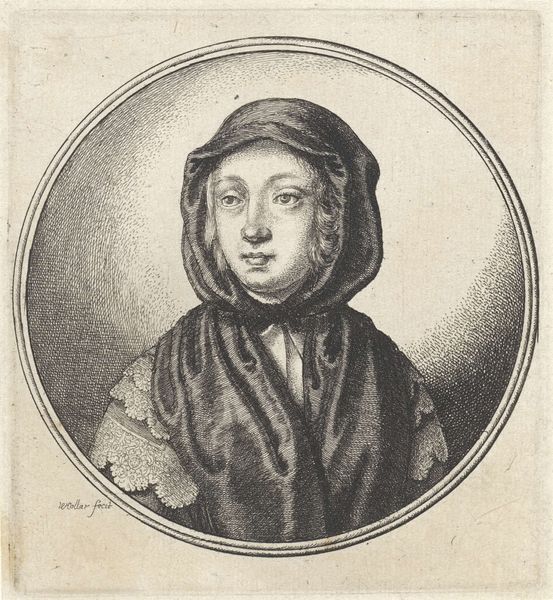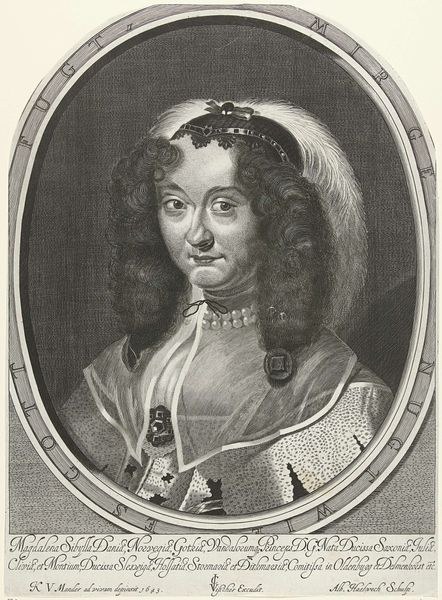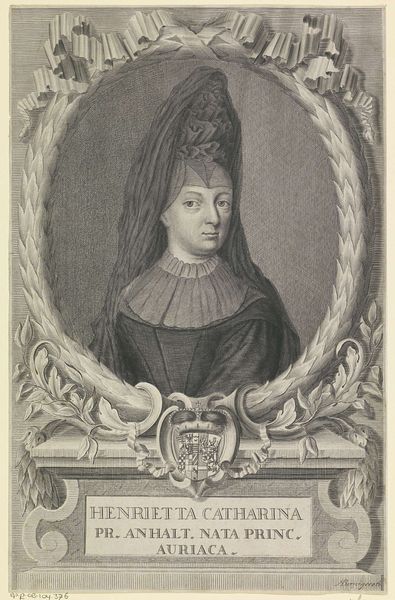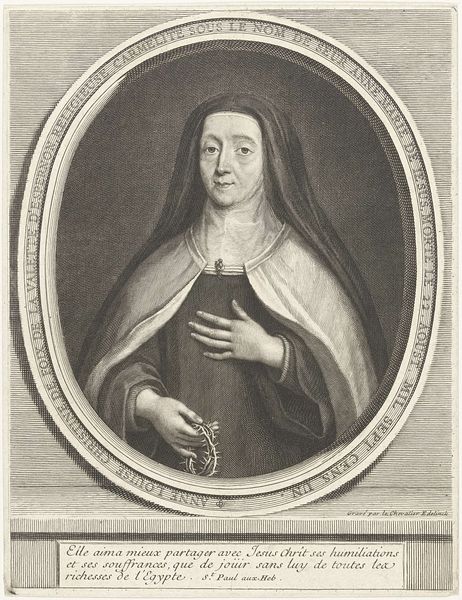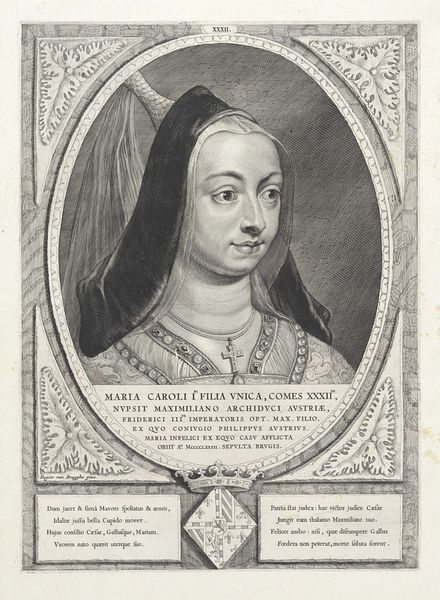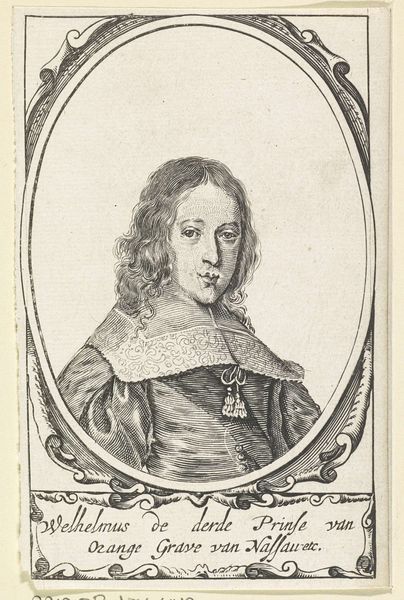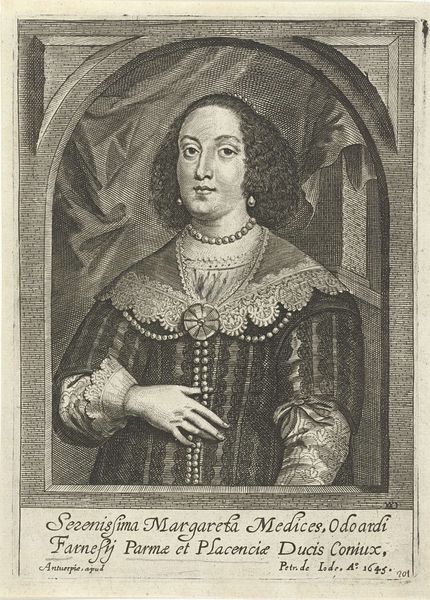
print, engraving
#
portrait
#
baroque
# print
#
line
#
history-painting
#
engraving
#
realism
Dimensions: height 213 mm, width 161 mm
Copyright: Rijks Museum: Open Domain
Curator: Before us, we have Gérad Edelinck’s "Portret van Marie Bonneau de Rubella," a striking engraving likely created between 1696 and 1707. Editor: There's an arresting directness in her gaze, a compelling mood given it’s rendered entirely in line—almost austere yet softened by the oval frame. Curator: As a print, consider its potential for mass production. How does the medium influence the portrayal and our access to images of elite women? Who had the access to possess these prints? Editor: Exactly! It's not merely about individual representation; it signifies broader access. Think of it less as passive portraiture and more about performative visibility—Marie Bonneau actively entering social discourse. I’d guess this was commissioned and then gifted, shared, sold—her social circles being part of her currency. Curator: The meticulous craftsmanship certainly speaks to high-end commodity production of the period. Look at the textures achieved through varied engraving techniques. There’s a real artistry at play, raising questions of skill, training, and workshop collaboration within Edelinck’s practice. I am interested in the socio-economic relationships that this creation necessitated. Editor: Absolutely, the clothing provides a material marker, a display of privilege, and it also gives an indication about Marie Bonneau's potential role. The attire is conservative and unadorned, this suggests modesty, and piety that perhaps speak to her charitable engagements. I want to learn about her access to resources! What do her clothes tell us? What about the specific context of her life experiences? Curator: Perhaps an interesting aspect might also involve asking if she had any input. Did Marie Bonneau influence Edelinck? And was there an established style and template to the portrait-making production industry at the time? Editor: Both things are absolutely connected—her choices and agency intersecting with the constraints of genre and expectation. Ultimately it encourages questions that allow a multifaceted perspective on social history. Curator: Looking at it through a different angle, for example, it's also amazing that we are engaging with an object made centuries ago and the dialogue continues because of materials that still exist and sustain in some way, today. Editor: Yes. Seeing this allows us to actively reconsider assumptions regarding gender, class and even labor, which reframe what art history, in all forms, could truly become.
Comments
No comments
Be the first to comment and join the conversation on the ultimate creative platform.

